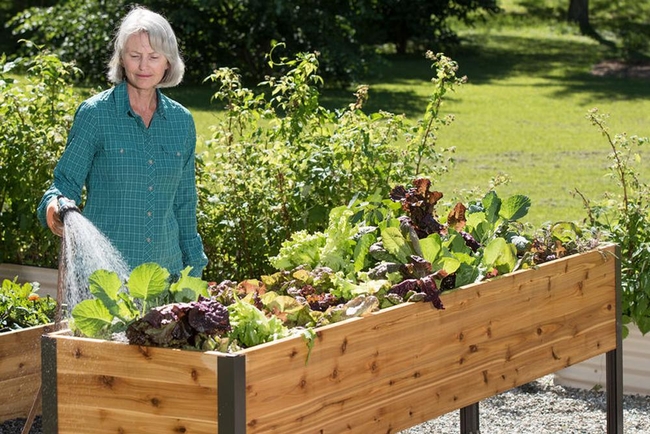No matter how old we are, when Fall comes, we inevitably hear the call of the garden: “Come, make haste, clean up, clear out and plan for next year's garden.” If we have been avid gardeners for most of our adult lives, it is an exciting pull of the heart, for Fall planning and preparation are the groundwork of our upcoming gardening season.
Before we get too far into the joy of the planning season, it is prudent to take a serious assessment of where we are from a health standpoint. Just because we may be in our 70's and beyond, we can continue to experience the joy of working with nature in the cycle of life in the garden by modifying our expectations and being honest with ourselves.
In doing research for this topic, I came across a statement in a delightful book called The Age-Proof Garden by Patty Cassidy. I will borrow her quote because I can't think of a better way to say it: “While your energy might be less and your capabilities more limited as you get older, spending time in the garden—digging, sowing, cultivating, fertilizing and harvesting—will keep you healthy, strong, positive and happy.” I choose to focus on this positive note, not just because I am an eternal optimist, but because I place a high priority on gardening activities in my retirement years. Careful planning while keeping an eye on the realities of unrelenting arthritis, along with balance and mobility issues, can result in being able to continue gardening for as long as it gives us pleasure.

Our goal as senior gardeners is to strive to eliminate stress that we experience when we set our expectations on outcomes experienced in our younger years. We can set ourselves up for stress and disappointment when our ambitions and dreams are not able to be met because we neglected to do the necessary reality checks. Seniors need the maturity and wisdom to recognize that they need to make compromises and adjustments if they want to continue having a positive relationship with gardening. There are three main areas to consider: Our garden environment, our health, and our energy level.
Downsizing and simplifying our home garden can be an adventure and an opportunity for us to become creative problem solvers. One of the things that may be difficult for some is to be able to identify areas where we need to have outside help. It can become expensive to hire landscapers to help rework a home garden into a simpler footprint that requires less care. Large fruit trees are high maintenance items requiring spraying, thinning of fruit, climbing on ladders to harvest fruit, picking up fruit off the ground ,and pruning, all of which can require more energy and balance than we have left. If hiring a professional or family member to do this for us is not feasible, it is okay to bid our tree farewell and have it removed. Ladders are not a seniors friend. Another area to consider is evaluating high maintenance shrubs and perennials that require constant deadheading and or pruning. It is perfectly acceptable to offer such a plant to a friend who has admired it. If no one wants it, the thing to do is to say your goodbye, shovel prune it, and put it in the green compost can to be hauled away. It is not always easy to say goodbye, but it is more important to put a priority on your own health and well being.
Once we have achieved level ground, eliminated tripping hazards and swapped out high maintenance for low maintenance plants, it is time to find that special place in our garden to sit and enjoy the fruits of our labors and to enjoy the memories of our garden adventures. It is even better to swap garden stories with a friend and a nice cup of your favorite beverage.